If you are a thrill-seeking adventurer, then Corregidor Island is the perfect destination for you.
Corregidor Island is the perfect travel destination for those who love war history, anecdotes of survival, tales of allegiance, and a sprinkling of ghost stories.
 |
| Spanish-era lighthouse |
11 Top Things To Do In Corregidor Island (Overnight Tour In This Historic Fort)
Corregidor has always had an air of mystery, primarily because it had once been the site of a violent event. Add to that the fact that the island is deserted, save for a handful of hotel personnel who live here.
Even with the light of the day, the generally dark feeling that surrounds you is palpable. Nevertheless, a trip to Corregidor Island is every thrill-seeker’s dream adventure.
History of Corregidor Island
The rocky Corregidor Island, also known as Fort Mills, with its strategic location at the mouth of Manila Bay has been used since the Spanish occupation as a registration site for ships entering Manila.
During the American occupation, Corregidor was fortified as a military station — complete with an intricate tunnel system and strong ammunition.
The island served as the primary defense fort of Manila when Japanese forces invaded the country. Today, only the ruins of the barracks and hospitals remain.
Corregidor Island is part of the province of Cavite although geographically, it is more proximate to the province of Bataan.
Our Corregidor Island Experience
The mystery shrouding Corregidor Island has always intrigued me. I wanted to see and experience the island, with its ruins and stories, for myself.
It was a year ago when Khris and I planned on going to Corregidor Island. There were a few times when I planned on going but, unfortunately, those did not push through.
It was funny though because this trip to Corregidor Island was actually one of Khris and I’s spur-of-the-moment out-of-town adventures. We booked the overnight tour through the now-defunct Sun Cruises (I've included an alternative tour agency at the end of this post) immediately for the coming weekend.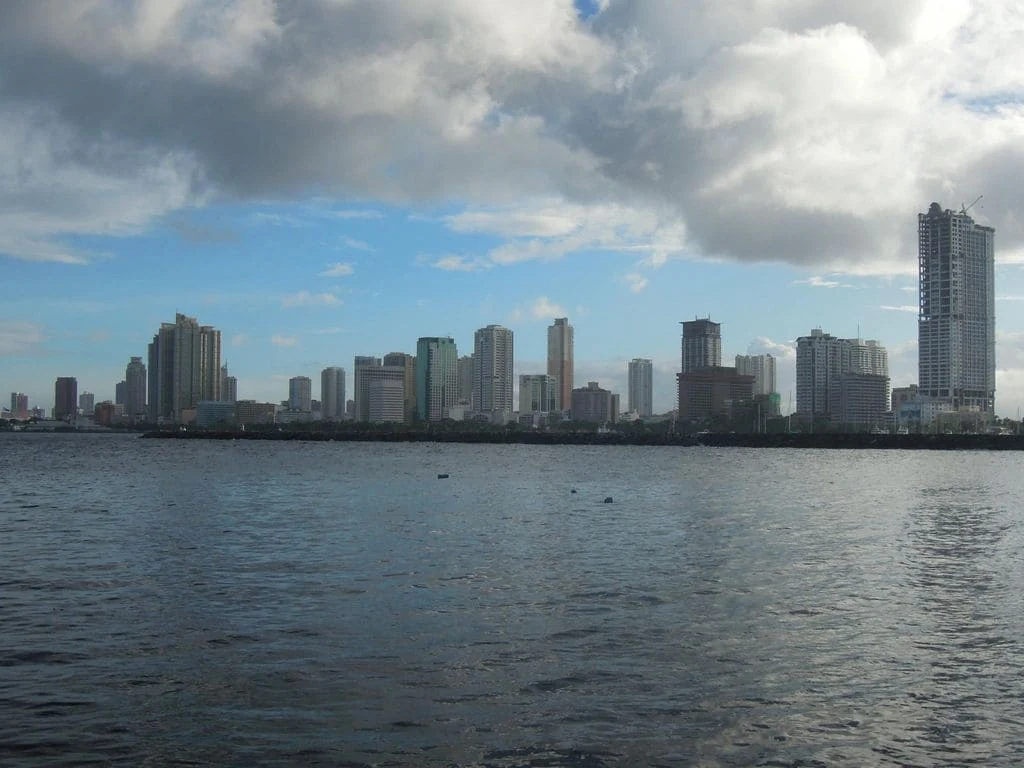 |
| A photo of the Manila skyline as our ferry departs for Corregidor |
All in all, it was a tour that we would always recommend. It was an easy tour, no itinerary planning was needed because Sun Cruises will handle it. The tour guides are engaging and knowledgeable, and they also know how to crack jokes at the right moment.
By the way, if you want to participate in the ghost-hunting tour, you should get the overnight package because the day tour does not include it.
How to go to Corregidor Island
The only route going to the island was via a one-hour ferry ride from the CCP Complex. It was a smooth and comfortable journey because the weather was fine. Going back to Manila involved taking the same route.
Map courtesy of Wanderlog, for itineraries
What to do in Corregidor Island
When we arrived at Corregidor Island, we were ushered to our assigned tranvias. Upon arriving at the island, we were greeted by tranvias that will take us around the island for the entire duration of the tour.
According to our guide, tranvias were the primary means of transportation on the island during World War II. The present-day tranvias are engine-operated, unlike the original ones that were electric-powered and ran on tracks.
 |
| Here’s how the tranvia looks like from inside (yes, those bags of Chippy, as well as cold Coke and bottled water, are for sale) |
As soon as we were all settled in, our tour guide gave us an overview of the island’s geography — the Topside, Middle side, and Bottom side.
The section of Corregidor Island with the biggest land area is the Topside. This is the location of the Army headquarters, barracks, officers’ quarters, most of the artillery batteries, Pacific War Memorial, and an old Spanish lighthouse.
The Middle Side is where the officers’ quarters, barracks, hospital, quarters for non-commissioned officers, and schools are located. The hospital, reputed to be haunted, is a favorite site for ghost-hunting tours.
The Bottom Side is the lower part of the island that serves as the neck that connects the head and the tail of the island.
The Malinta Tunnel, the last stronghold of the Philippine and American military forces, is located here. This tunnel was originally intended as a bunker but it was eventually converted to a 1000-bed hospital.
 |
| Our guide pointed to Caballo Island from here but I could not see it |
We proceeded with our tour when our guide finished with an overview of the island's geography. Depending on the tour package that you purchased, these are the landmarks that you may expect to see during your tour:
1. Statue of General Douglas MacArthur
Our first stop was General Douglas MacArthur Park. Prominently displayed here is a life-size bronze statue of General MacArthur. A marker engraved with his famous line "I shall return" is located at the foot of the statue.
 |
| Statue of Gen. Douglas McArthur, who used the island as allied headquarters and as an escape route to Australia |
General Douglas MacArthur Park is located near Lorcha Dock; this is where General MacArthur set sail to Australia.
2. Japanese and American Tunnels
This was not a part of the stopover but our guide pointed to us examples of a Japanese and an American cave. She emphasized that the differences between the two are the sizes and the location.
In terms of size, Japanese tunnels are was smaller as compared to those of the Americans'. Japanese tunnels are located along the coast while American tunnels are along cliffs.
 |
| This is an example of a Japanese tunnel, much smaller than an American tunnel according to our guide |
3. Japanese Garden of Peace
We had our first stopover at the Japanese Garden of Peace. This place is dedicated to thousands of Japanese soldiers who perished during the war.
Once a cemetery covered by dense undergrowth, it was eventually discovered because of the photo below, and the remains were exhumed, cremated, and repatriated to Japan.
 |
| The Japanese Garden of Peace was formerly a cemetery for Japanese soldiers killed during the war |
 |
| A photo of Japanese soldiers during the war |
Cleared of thick shrubs and subsequently landscaped, the Japanese Garden today features shrines and markers that serve as a memorial for the Japanese soldiers formerly interred here. Interestingly, there is also a statue of a Japanese fertility deity located here.
 |
| A Japanese fertility deity |
There is also a small souvenir shop here at the Japanese Garden of Peace that also doubles as a mini-museum where an old and worn-out Japanese flag is displayed. Likewise showcased were old bills and photos taken during World War II.
 |
| Old Japanese flag |
 |
| Collection of old banknotes |
4. Filipino Heroes Memorial
From the Japanese Garden, we proceeded to the Filipino Heroes Memorial. According to our guide, they do not bring Japanese guests here because of cultural sensitivity.
The murals depict the atrocities committed by Japanese soldiers against Filipino men and women.
 |
| At the Filipino Heroes Memorial |
From the Filipino Heroes memorial, our guide announced that we would have a one-hour lunch break at Corregidor Inn before proceeding to the last leg of the day trip, which consisted of tours around the ruined soldiers' quarters and batteries.
We had a lunch buffet of salad, rice, meat, dessert, and drinks. The food was good and filling but nothing spectacular. Anyway, we went here for the adventure and not really for the food.
We had a lunch buffet of salad, rice, meat, dessert, and drinks. The food was good and filling but nothing spectacular. Anyway, we went here for the adventure and not really for the food.
5. Middleside Barracks
The images of Corregidor Island that remained in my head are that of the ruined barracks. Honestly, this is the part of the tour that I was most excited to see. We made a short stop at the Middleside barracks for photo ops.
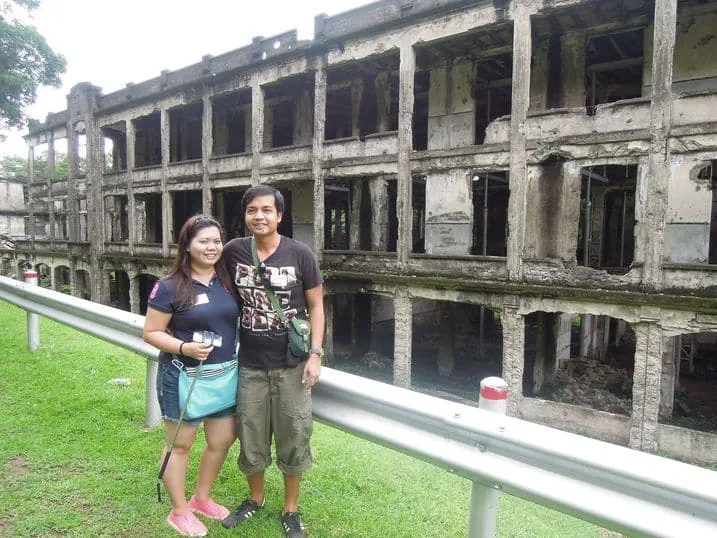 |
| Middleside barracks |
 |
| Front of the middleside barracks |
6. Corregidor Island's Main Batteries
Corregidor has three main batteries named after American generals: Battery Way, Battery Hearn, and Battery Grubbs.
 |
| Battery Way |
Of the three batteries, Battery Way is the smallest and features a barracks for storing ammunition. Meanwhile, Battery Hearn is the biggest and was considered as the most important among the three.
 |
| Battery Hearn |
The last that we visited was Battery Grubbs. From here, the small La Monja Island is visible.
7. Mile-Long Barracks
We made a quick stopover at the Mile-Long Barracks, which was the longest garrison according to our guide.
8. Pacific War Memorial
From the batteries, we went to the Pacific War Memorial. Located here is the Pacific War Memorial Dome, ruins of Cine Corregidor, a museum containing artifacts from World War II, and the Eternal Flame of Freedom.
9. Spanish Lighthouse
The last stop for the day tour was at the highest peak of Corregidor Island where a Spanish Lighthouse stood.
We purchased an evening tour which consisted of a visit to a ruined hospital and the Malinta Tunnel. From the Spanish Lighthouse, the last stop of the day tour, our guide told us that we could take a rest and reassemble the lobby of the Corregidor Inn at around 6:00 PM.
At the appointed time, the evening tour participants gathered at the hotel lobby where a guide was waiting for us. We boarded our assigned tranvia and proceeded to our destination.
Along the way, there are more ruins such as a school and a department store which used to sell imported goods. Keep your eyes also peeled for monkeys playing by the roadside.
10. "Ghost-hunting" at the hospital ruins
Our first stop was the hospital ruins for a ghost-hunting. People claim that the hospital is one of the most haunted places on the island. That may hold true as hospitals bear witness to numerous deaths and sufferings.
Anyway, we did not really summon spirits or made attempts to detect their presence. It was more of a story-telling session courtesy of our guide about the supposed ghosts haunting the place. Well, the hospital ruins were spooky alright but thankfully we did not see any otherworldly being floating about.
11. Malinta Tunnel
The peak of the evening tour is a walk inside the Malinta Tunnel, the last stronghold of the joint Philippine and American military forces before the Japanese takeover. Malinta Tunnel was named after linta (leeches) which workers found to be abundant inside the tunnel.
Our guide showed us around, mostly in dark corners, as well as old offices and equipment when the tunnel was converted to a hospital. Here, our guide told us more stories of the suffering and atrocities committed during World War II.
 |
Inside the Malinta Tunnel for the evening tour
|
 |
| An old typewriter used during wartime |
 |
| One of the scenes in the Malinta Tunnel light show |
A visit to the tunnel usually included a light show and an audio-visual presentation but these were unavailable that evening because Malinta Tunnel was being renovated.
Corregidor Inn
We stayed at Corregidor Inn, the only hotel on the island. It's a small hotel, old but well-kept. It had that old-world appeal. There were not really many amenities, save for a small swimming pool beside it.
The room had a bed, an air-conditioning unit, and a bathroom -- just the bare necessities to survive a night or two.
Other Travel Notes and Tips
Here are a few other things that you may also want to keep in mind about the Corregidor Island tour:
- Food in the hotel can be pricey so it's best if can bring your own.
- Wear comfortable clothes and footwear.
- Bring a first-aid kit as well as an insect repellant.
- Bring swimwear as there is a swimming pool beside Corregidor Inn. The beach is also open for swimmers but they shouldn't expect Boracay-like sand and water.
- Souvenirs sold outside the hotel are the least expensive.
- The island is powered by generators so there is no television in the hotel rooms to minimize power consumption.
- There is a small chapel near the hotel.
- Bring enough cash with you.
How to book a Corregidor Island Tour
Telephone Numbers:
- Telefax number +632-8478-1530
- Mobile landline +632-8925-0152
Mobile Numbers:
- 0939-923-6808
- 0917-596-2787
Email Addresses:
- Inquiries and Quotations: info@travelventours.com
- Bookings and Reservations: reservations@travelventours.com
- Advertising and Marketing: marketing@travelventours.com
- Customer Service: customercare@travelventours.com
PIN THIS ARTICLE
This post may contain affiliate links, including those from Amazon Associates, which means that if you book or purchase anything through one of those links, we may earn a small commission but at no extra cost to you. All opinions are ours and we only promote products that we use.
Download a free copy of my Churches of Nueva Ecija eBook HERE!
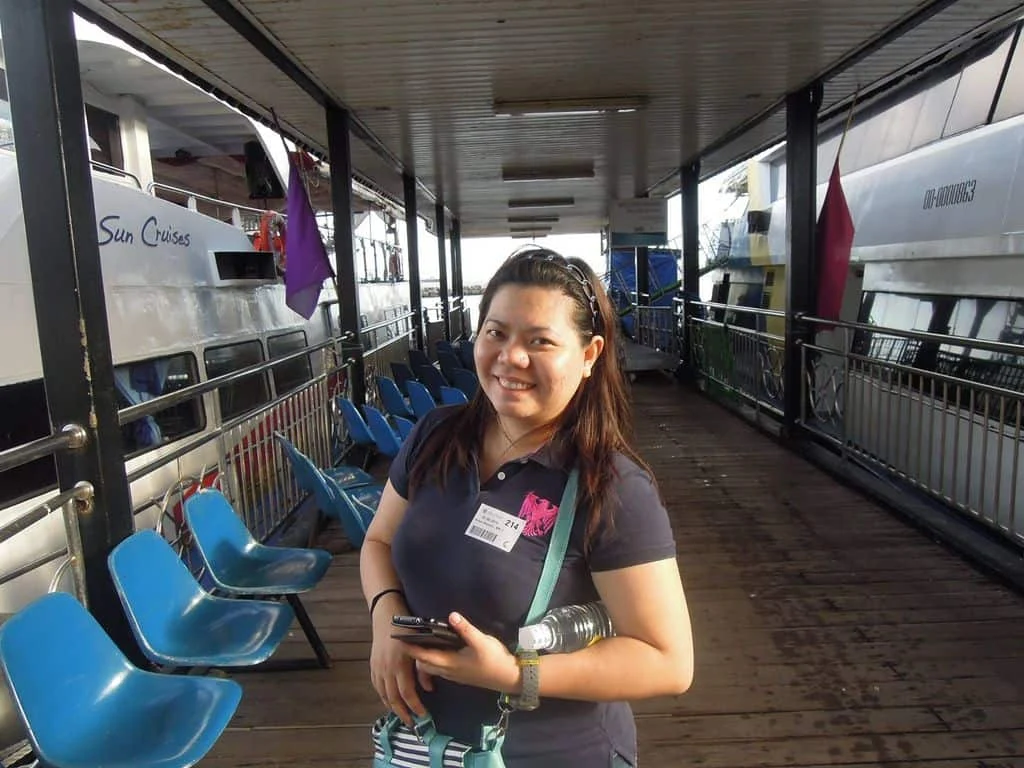







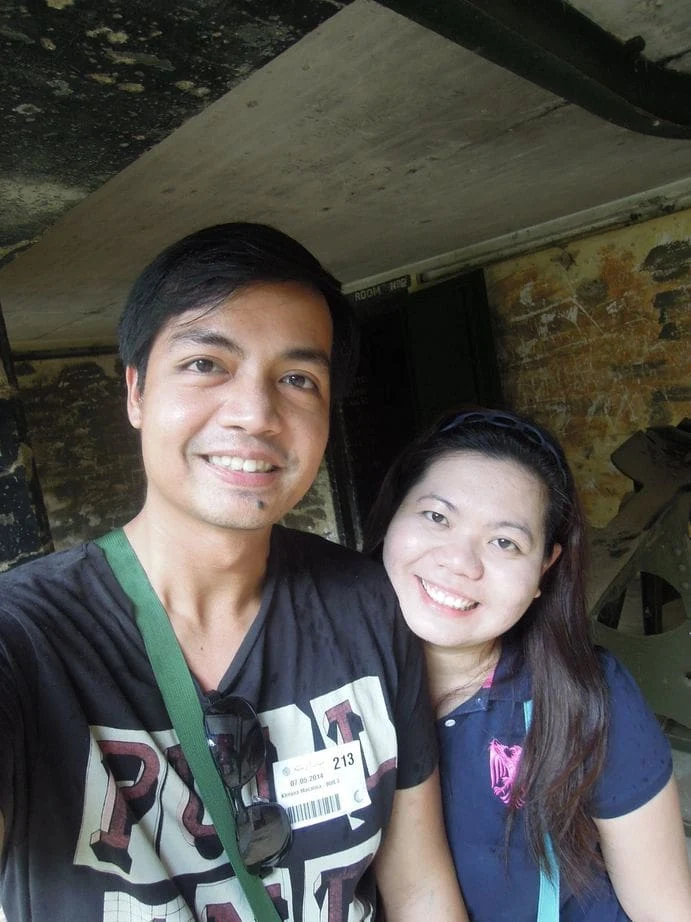






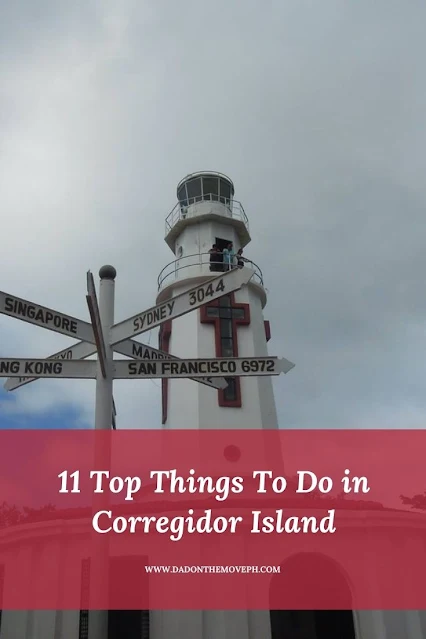
I love to go sightseeing and I really enjoy tours the most. I bet you had a great time on your overnight weekend tour. I absolutely love all of your clear and vivid photos. It's the next best thing to being there.
ReplyDeleteThis place is gorgeous. I have never visited it but my friend went there once and she absolutely loved it
ReplyDeleteThis looks like a really interesting place. I love your black and white photographs - they really complement the blog post.
ReplyDeleteRosie | www.rosieromance.com
What an interesting destination. Thanks for bringing this off the beaten path blog post to my attention
ReplyDeleteOMG I had no idea this island existed!! I love WWII history and now this is on my bucket list to visit. Thank you!
ReplyDeleteTours are always great. I really enjoy classic pictures and you did just that! Adding black and white to those pictures ended up with an outstanding result! Super cool! I also have something for abandoned buildings, don't know why!
ReplyDeleteI like history anyway so this overnight tour about the war sounds like a really good experience. Loved the photos too.
ReplyDeleteInteresting tour, especially the Japanese Garden of Peace. Tours are often a great way to learn about more obscure places of interest like this, which I hadn't heard of.
ReplyDeleteIt's awesome that you were able to see so many historical places. The stops on the day tour sounded so cool.
ReplyDeleteI've been there before but we only did the day tour and went home right after. It's a very lovely place especially since I love learning about WWII and what the soldiers went through during that time.
ReplyDeleteI liked all the photos, everything seems so nice. Japanese garden of peace is really beautiful. It's funny how I don't believe in ghost generally but I wouldn't go near that haunted hospital.
ReplyDeleteI would love to go to the Japanese garden! It looks gorgeous!
ReplyDeleteLove,
Ivelisse | CarnationDreams.com
With TBEX coming up soon, I need to learn more about the Philippines.
ReplyDeleteVery interesting places to visit! A friend of mine is planning to visit Manila in the end of this year so I will share this one for him.
ReplyDeleteI really love our country for having great sites filled with culture and history. Love your photos!
ReplyDeleteWhat a lovely place to visit and with such history behind it!
ReplyDeleteThank you so much! Yes, I agree with you. There’s more to love in the Philippines.
ReplyDeleteIndeed in it. Corregidor Island’s Japanese Garden is lovely.
ReplyDeleteThank you so much! Do tell me about your friend’s trip to Manila.
ReplyDeleteGusto ko 'to puntahan. Wait ko lang na lumaki pa si LO, hehw, yung mai-enjoy na nya. Parang educational trip na rin
ReplyDeleteAko po mahilig sa mga historical places. Gusto ko makapunta personally makita mga ganitong lugar. Nakaka amaze lang 😍
ReplyDeleteLalo na yung Caballo Island ang ganda best place to relax your mind.😊
Isa sa gusto ko puntahan when LO grows up a bit pa, yung mai-enjoy na nya. Educational trip na rin 💖 Maganda ito lalo na sa mga bata =)
ReplyDelete